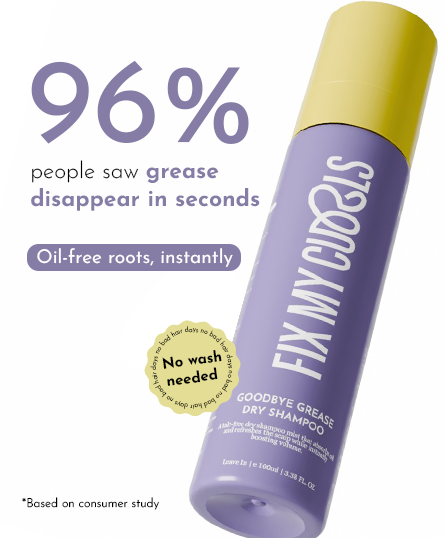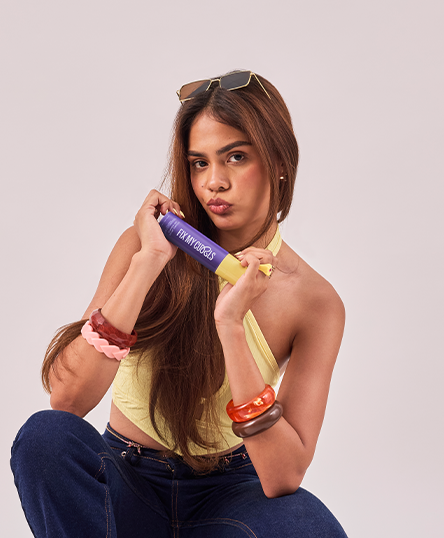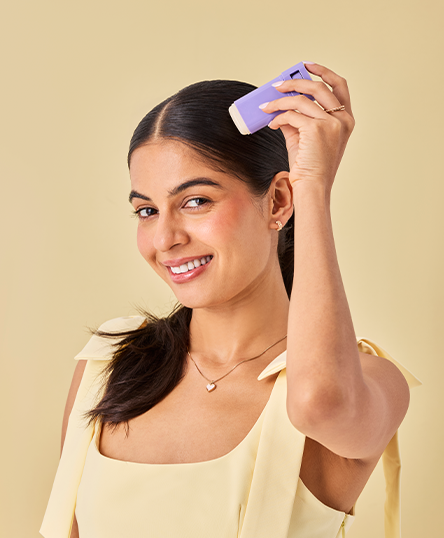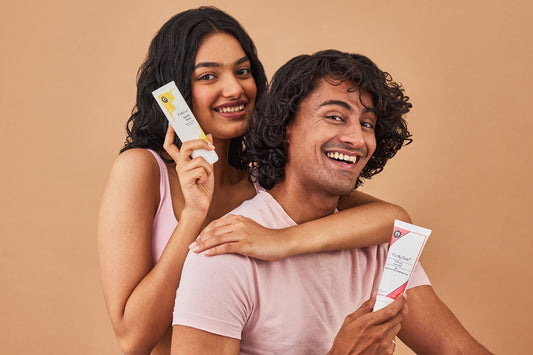How to Read a Curly Hair Product Label Without Getting Confused


Ever stared at the back of a hair product and thought, “Wait—what does any of this mean?” You’re definitely not the only one. For people with curls, decoding product labels isn't just a fun skill—it’s crucial. One wrong ingredient, and you could end up with dryness, buildup, or a frizz fest that won’t quit.
But what if reading those labels wasn’t as complicated as it seems?
This guide is your step-by-step cheat sheet. By the end, you’ll be able to scan a label and actually know what you're putting into your curls—and why the best curly hair products start with transparency, not trends.
Start with the First Five Ingredients
Here’s a quick trick: what’s listed first makes up most of the product. That’s why the first five ingredients are your curl’s real MVPs—or villains.
Good signs
-
Water (Aqua) – always a strong start, essential for moisture.
-
Botanical oils and butters – think shea butter, jojoba oil, or coconut oil. These soften and protect.
-
Humectants like aloe vera, glycerin, or honey – draw moisture into the hair shaft.
Red flags
-
Sulfates (e.g., Sodium Lauryl Sulfate) – harsh cleansers that strip your scalp.
-
Drying alcohols – such as ethanol or isopropyl alcohol; these zap hydration fast.
Beware of Fluffy Marketing Buzzwords
“Organic”. “Clean.” “For all hair types.” Sound familiar? These terms aren’t regulated and often mean very little.
Instead of falling for the front label, check the back.
Keep an eye out for
-
Fragrance (or parfum) – this can mean dozens of unnamed chemicals.
-
Silicones – anything ending in “-cone” might cause buildup, especially without clarifying shampoos.
Match Ingredients to Your Curl’s Needs
There’s no such thing as a one-size-fits-all curl product. What works for fine waves won’t suit thick coils.
If your curls are dry
-
Look for hydrating agents like panthenol or aloe.
-
Rich oils like avocado or castor oil can lock in moisture.
If they’re damaged
-
Ingredients like hydrolyzed keratin or silk protein help repair broken bonds.
-
Amino acids strengthen the hair from within.
If your curls are fine
-
Go for lighter oils like grapeseed or argan.
-
Avoid super heavy butters that weigh curls down.
pH Actually Matters
Many people skip this part, but pH plays a big role. Products with a pH between 4.5 and 5.5 help keep your cuticle flat, which means shinier, healthier-looking curls with less frizz.
If the brand lists the pH on the label, that’s usually a good sign they know what they’re doing.
Understand Preservatives (Don’t Panic)
Preservatives are necessary; otherwise, your favourite leave-in might go mouldy. But there are friendlier choices you can look out for.
Preferable ones
-
Potassium sorbate
-
Sodium benzoate
-
Ethylhexylglycerin
More questionable ones
-
Parabens like methylparaben
-
Formaldehyde releasers such as DMDM Hydantoin
Simple Labels, Honest Brands
Ever notice that the best products don’t feel like they’re hiding anything? If the ingredient list reads like a recipe, that’s usually a win.
The more transparent a brand is, the more likely it is to respect your hair’s health.
Don’t Trust Results from One Wash
That silky feel right after rinsing? It could be from temporary fillers like silicones. What matters more is how your curls feel after consistent use.
Learn to notice whether your curls bounce back over time or feel heavier, flatter, or drier. Labels help you track that.
“Free From” Isn’t the Whole Story
Sure, you’ll see “sulfate-free” or “paraben-free” everywhere—but that only tells half the tale.
Instead of focusing on what a product lacks, make sure it also has what your curls actually need: hydration, nourishment, and support.
A solid formula includes
-
Moisture magnets like aloe and glycerin
-
Emollient-rich oils
-
Mild proteins if you need strengthening
Learn the Terms
Not every ingredient is scary. Some just sound that way. Here’s a bite-sized glossary:
-
Emollients: soften and smooth (e.g., coconut oil, shea butter)
-
Humectants: pull moisture into your hair (e.g., aloe vera, honey)
-
Proteins: strengthen and repair (e.g., hydrolyzed silk, wheat protein)
-
Occlusives: lock in hydration (e.g., beeswax, castor oil)
Once you recognise these, deciphering a label becomes way easier.
Brands That Get Curls Make It Easier
Some brands just know curls. Fix My Curls is one of them. Our line skips the fluff and delivers only what curly hair thrives on—no sulfates, no parabens, no silicones. Just clean, smart formulas.
Our ingredients are curated with intention. From gentle cleansers to deeply hydrating stylers, each product is created with curl science at its core.
If you’re navigating the often-confusing world of curly hair products, you’ll find Fix My Curls to be a reliable, thoughtful partner in your hair journey.
Wrapping It Up
You don’t need a chemistry degree to understand your hair products. You just need the right information. Learn to recognise the ingredients that work with your curls—not against them.
Look past the flashy terms and focus on what’s actually in the bottle. Trust your instincts, trust your research, and trust brands that are transparent about what they use.
Your path to healthy curls doesn’t start with a miracle product. It starts with flipping that bottle around and knowing what’s inside. And if you’re ever unsure, remember: the best curly hair products are the ones that are honest, effective, and curl-conscious—just like everything Fix My Curls offers.









